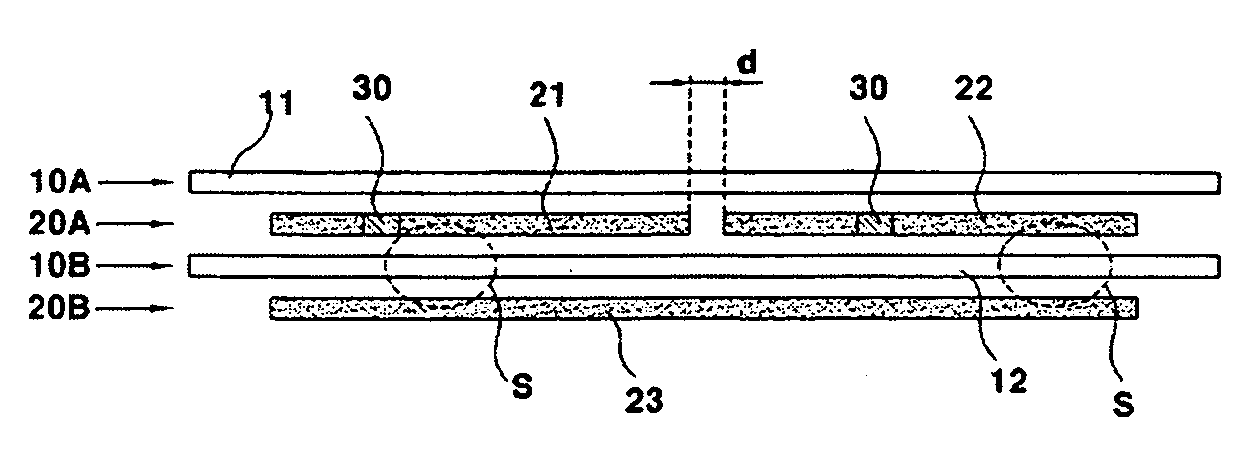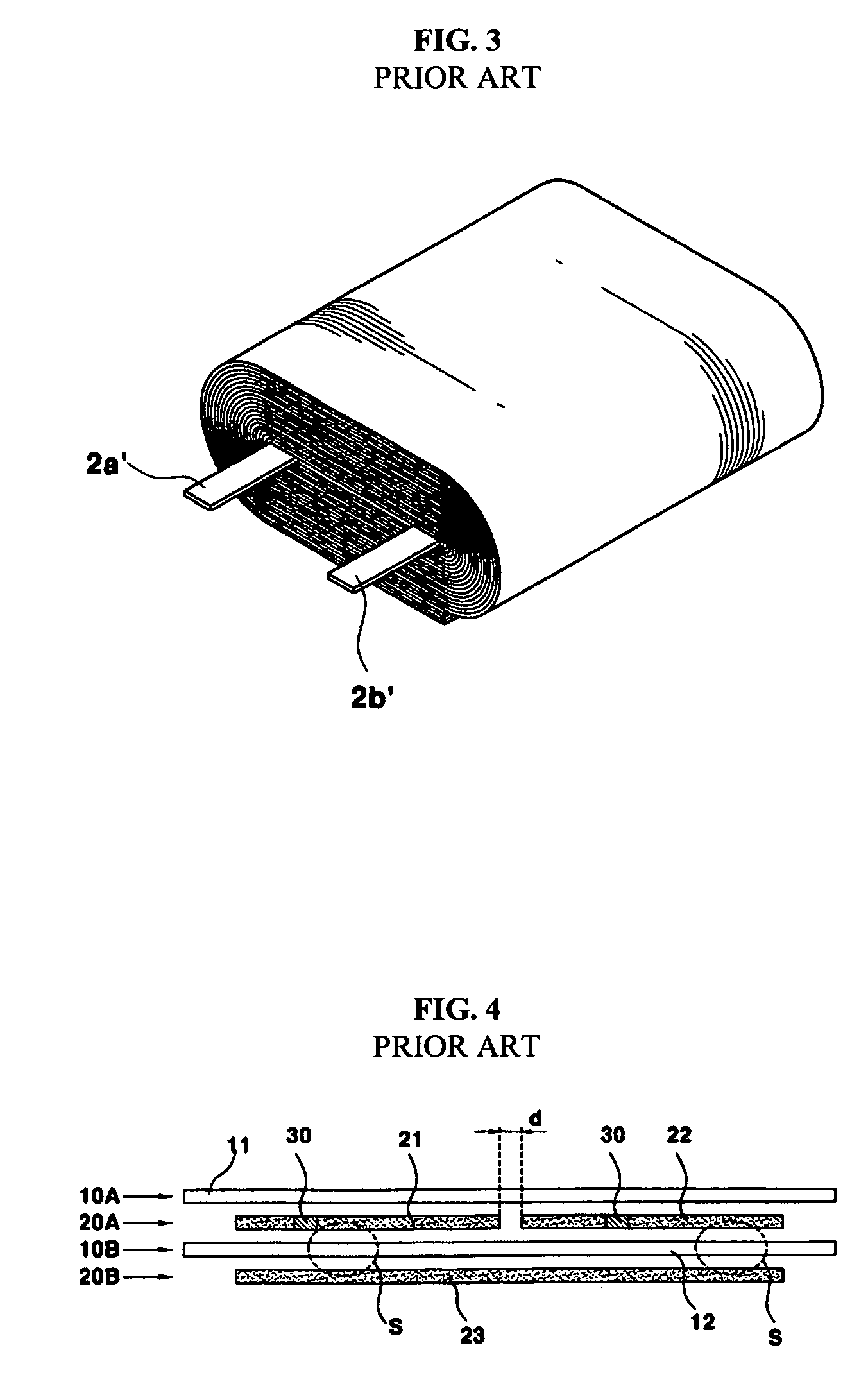High-voltage electric double layer capacitor
a double-layer capacitor, high-voltage technology, applied in the direction of electrolytic capacitors, capacitors, electrical equipment, etc., can solve the problems of increasing the number of unit cells, the balance problem between the unit cells, and the inability to apply high voltage to any one of the unit cells, so as to increase the number of electrodes, increase the surge voltage and operating voltage
- Summary
- Abstract
- Description
- Claims
- Application Information
AI Technical Summary
Benefits of technology
Problems solved by technology
Method used
Image
Examples
example 1
[0069] A terminal 30 was drawn from each of typical activated carbon electrodes for an EDLC, and the electrodes were arbitrarily divided into a positive electrode 21 and a negative electrode 22. The two electrodes 21 and 22 were arranged parallel to each other. An additional bridge electrode 23 was then arranged to face the two electrodes 21 and 22 with a sheet of insulating paper interposed therebetween, thereby obtaining the laminate structure as shown in FIG. 5 (three electrodes, and the structure of FIG. 5). At this time, the electrodes 21, 22 and 23 were 0.017 cm in thickness and 3.1 cm in width. The positive electrode 21 and the negative electrode 22 among the electrodes 21, 22 and 23 were 5 cm in length, and the bridge electrode 23 was 10 cm in length. An interval d between the positive electrode 21 and the negative electrode 22 was about 10 mm. Thereafter, only the sheet of insulating paper was rotated about three revolutions in a winding machine with a winding core of a dia...
example 2
[0079] This example was the same as Example 1 except that in preparing a cylindrical unit cell device, electrodes were arranged as shown in FIG. 6 (four electrodes, and the structure of FIG. 6). At this time, the electrodes 21, 22, 23 and 24 were 0.017 cm in thickness, 3.1 cm in width, and 5 cm in length. An interval between the electrodes arranged parallel to each other was about 10 mm.
[0080] Thereafter, in the same manner as Example 1, the electrolyte was injected into the prepared device, and the device was sealed with a rubber pad, thereby completing a sample according to this example. A C-V curve of the sample up to 7.0V was measured in the same method as Example 1. The measurement results are shown in FIG. 12.
example 3
[0081] This example was the same as Example 1 except that in preparing a cylindrical unit cell device, electrodes were arranged as shown in FIG. 7 (five electrodes, and the structure of FIG. 7). At this time, the electrodes 21, 22, 23, 24 and 25 were 0.017 cm in thickness, 3.1 cm in width, and 5 cm in length. An interval between the electrodes arranged parallel to each other was about 10 mm.
[0082] Thereafter, in the same manner as Example 1, the electrolyte was injected into the prepared device, and the device was sealed with a rubber pad, thereby completing a sample according to this example. A C-V curve of the sample up to 7.0V was measured in the same method as Example 1. The measurement results are shown in FIG. 13.
[0083] From FIG. 11 (Example 1, three electrodes), FIG. 12 (Example 2, four electrodes) and FIG. 13 (Example 3, five electrodes), it can be seen that the value of a current is gradually stabilized in the C-V curve if the number of the electrodes increases.
[0084] Fu...
PUM
 Login to View More
Login to View More Abstract
Description
Claims
Application Information
 Login to View More
Login to View More - R&D
- Intellectual Property
- Life Sciences
- Materials
- Tech Scout
- Unparalleled Data Quality
- Higher Quality Content
- 60% Fewer Hallucinations
Browse by: Latest US Patents, China's latest patents, Technical Efficacy Thesaurus, Application Domain, Technology Topic, Popular Technical Reports.
© 2025 PatSnap. All rights reserved.Legal|Privacy policy|Modern Slavery Act Transparency Statement|Sitemap|About US| Contact US: help@patsnap.com



